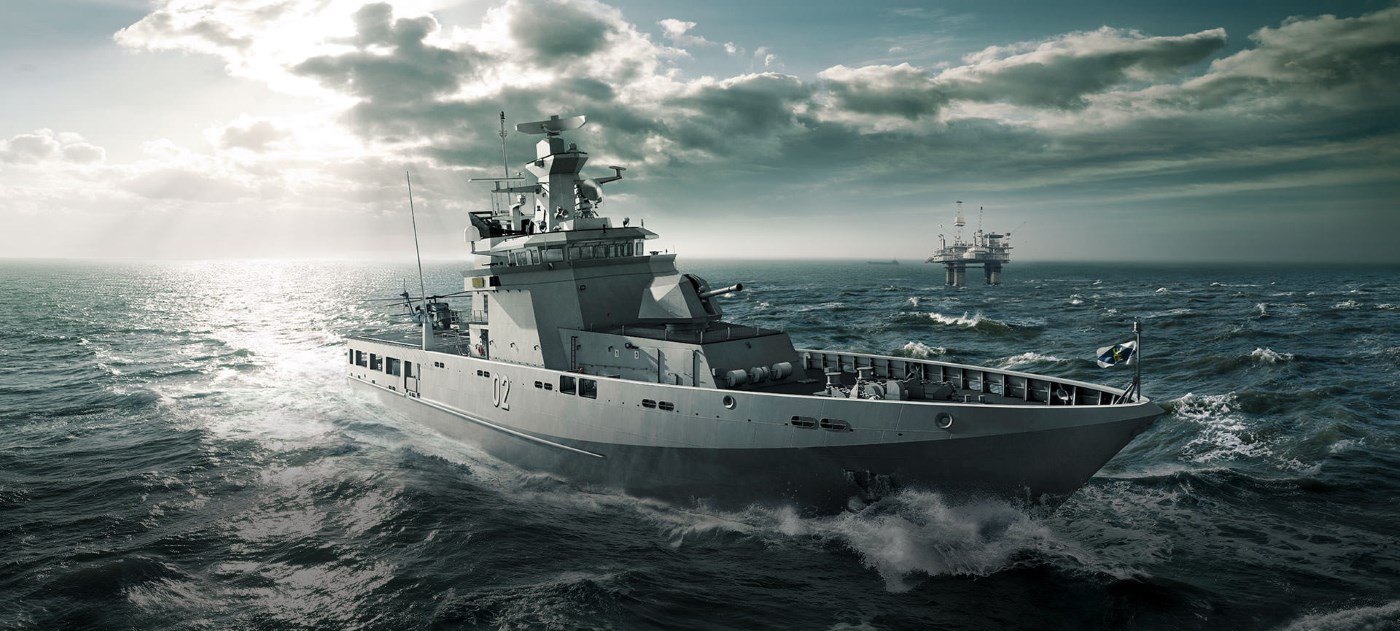
Australia’s current Armidale class and Cape class patrol boats are planned to be replaced with a single class of Offshore Patrol Vessel (OPV), under Project SEA 1180 Phase 1, to be built in Australia by German shipbuilder, Lürssen’s subsidiary, Luerssen Australia partnering with Australian shipbuilder, Civmec in the joint venture, Australian Maritime Shipbuilding & Export Group (AMSEG).
The twelve Australian vessels are based on the PV80 design
with the first two vessels to be built at ASC’s Osborne shipyard in South
Australia before production moves to Civmec’s Henderson shipyard in Western
Australia.
On 15 November 2018, the Chief of Navy, VADM Mike Noonan,
announced that the OPV will be known as the Arafura Class with construction
commencing at the Osborne shipyard.
The primary role of the OPV will be to undertake
constabulary missions, maritime patrol and response duties. State of the art
sensors as well as command and communication systems will allow the OPVs to
operate alongside Australian Border Force vessels, other Australian Defence
Force units and other regional partners.
The OPV design will support specialist mission packages,
such as a maritime tactical unmanned aerial system, and into the future, rapid
environmental assessment and deployable mine counter measure capabilities.
Design and features of Arafura class OPVs
The design of the Arafura class OPVs is based on the Lürssen
OPV80 platform. The compact design of the OPV offers enhanced seakeeping
characteristics and superior performance.
The spacious aft deck will have enough room to house three
rigid-hulled inflatable boats (RHIB). Two 8.5m-long boats can be launched from
the side of the vessel while a 10.5m sea boat can be launched from the stern of
the ship.
The OPVs will have a length of 80m, beam of 13m, and draught
of 4m. The displacement of the vessels will be 1,640t. The ships will be manned
by a crew of 40 members and will offer accommodation for more than 60
passengers.
Armament and navigation features of the OPV
The Arafura class OPV will be primarily armed with a 40mm
large cannon mounted on the forward bow deck to protect the ship from onshore
attacks. It will also feature dedicated mounts, which can be armed with .50
calibre machine guns.
The firepower of the vessel can be further improved by the
advanced 9LV combat management system designed by SAAB Australia. The control
system will be complemented by the on-board electronic warfare system.
The navigation bridge integrates all the communication,
navigation, and sensor systems. The navigation requirements of the vessel will
be addressed by next-generation 2D radar and electro-optical sensors.
The vessel will feature an aft flight deck to enable
unmanned aerial system (UAS) operations.
Propulsion and performance of Inspector 120
The Arafura class vessels will be equipped with two diesel
engines with a maximum-rated power production capacity of 8,500kW each.
The power plant will enable the vessels to sail at a maximum
speed of 20kt and attain a maximum range of 4,000nm.
The lead vessel, HMAS Arafura is planned to planned to enter service in 2021.
Type Offshore
Patrol Vessel (OPV) RAN Arafura-class
Roles
Maritime border
patrol
Maritime
constabulary roles including interdiction
Fisheries patrol
Humanitarian and
disaster relief
Minehunting
Hydrographic
Survey
Builder Luerssen Australia and Civmec
Displacement 1,640 tonnes
Length 80 metres
Beam 13 metres
Draught 4 metres
Propulsion 2 x 4,250KW diesel engines
Speed 20 knots (maximum)
Range 4,000 nautical miles
Boats
2 x 8.5 metre sea
boats (side launched)
1 x 10.5 metre sea
boat (stern launched)
Weapons
40mm
gun
2 x 50 calibre
machine guns
Company 40 crew with accommodation for up to 60
personnel